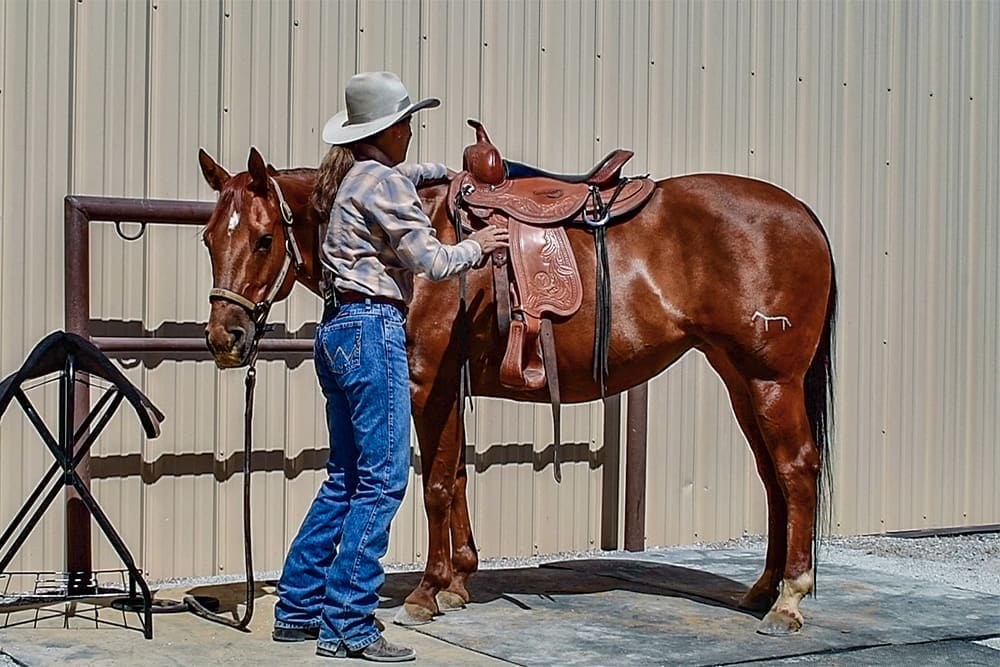Question Category: Talk about Tack
Question: Dear Julie,
How do you know when a bit is properly sitting in the horse’s mouth? We have always heard that you look at the “wrinkles”. However, this can be confusing to us.
Thank you,
Devonna
Answer: Devonna,
This is a confusing issue to lots of people and one that almost always comes up in my clinics. It’s an old-fashioned concept to say that the bit fits correctly when you see one or two wrinkles in the horse’s lips. In fact, the height of the bit in the horse’s mouth is determined by the horse’s level of training, the type of bit you are using and the type of riding that you do.
First, consider the anatomy of the horse’s mouth. He has a set of lower teeth (distal) and a set of upper teeth (proximal), with a gap in-between called the bars, where there are no teeth. This is why you can stick your finger right into a horse’s mouth at the corners of his lips and not worry about being bit.
In considering the height of the bit in the horse’s mouth, your main concern is that the bit is not hanging so low as to clunk on his lower teeth and not so high as to interfere with his upper set of teeth. As you can imagine, the bit hitting against the horse’s teeth can cause him a great deal of discomfort; after all, he has nerves in his tongue, teeth, gums and lips just like you do. So the bit needs to be high enough that it won’t hit on the lower teeth and low enough that it won’t interfere with the upper teeth when you pick up on the reins.
Secondly, consider the horse’s level of training. When a young untrained horse is bitted for the first time, he will naturally try very hard to spit the bit out—working it with his tongue and moving it around his mouth. If in this effort he accidentally gets his tongue over the bit, he gets a release of endorphins (the natural opiates we have in our system that are released when we are in pain), which relieves his anxiety and makes him feel better. The release of endorphins can have an addictive effect on the horse and may cause him to put his tongue over the bit every time you put it in his mouth.
Since you have little or no control over a horse with his tongue over the bit, this is a very difficult habit to deal with and may affect the horse, his training and his value for the rest of his life. Therefore, if the horse is very young and green (or habitually puts his tongue over the bit) he may need to have the bit high in his mouth—in the order of two wrinkles—to prevent him from getting his tongue over the bit.
As the horse progresses in his training and gets more comfortable with the bit, we can start lowering the bit so that it is in a more comfortable position in his mouth and so that he can move the bit around in his mouth to suit himself, thus keeping his mouth soft and relaxed. How low we drop it in the horse’s mouth will depend on the type of bit and style of riding that you do.
Ideally, I like the bit to barely be touching the corners of the lips, but not gaping at all. This way, the bit is putting the least amount of pressure possible on the horse’s lips and it will enable me to give very light and subtle communications with my fingers. If the bit is up tight in his mouth—with one or two wrinkles—there is a constant heavier pressure on his lips so he would never feel or be able to respond to the lightest movement of my fingers.
If you ride with moderate to heavy contact on the reins, you may want the bit slightly higher in the horse’s mouth (say one wrinkle), so that the bit is steadier in his mouth and the horse can balance on the bit a little easier. But even English horses ridden on direct contact can work equally well off very light contact on the reins; contact is contact—whether it is one ounce or five pounds.
Depending on the style of bit—leverage or direct pressure (curb or snaffle)—and the actual design of the bit (shape and configuration of the mouth piece), the bit may work better higher or lower in the horse’s mouth, but you never want the bit to be hanging below the corners of his mouth and risk hitting his lower teeth.
I frequently find myself correcting the level of the bit in horses mouths in my clinics—either raising it or lowering it until I find the sweet spot. As you can see, there is a lot to consider before you find the right level and it’s not as simple as one wrinkle or two—so it is a good question that you asked! I hope this clears the waters for you a little and that your horse will be more comfortable as a result.
JG
Get Julie’s Bits HERE

